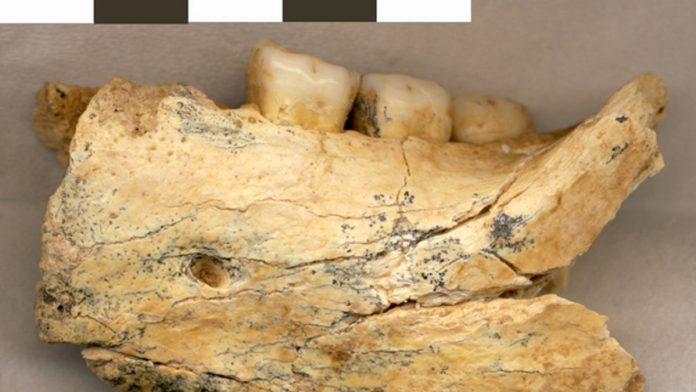While it has become well-known that all modern humans living outside of Africa all bear some traces of Neanderthal DNA, there has been little data amassed concerning just when inter-breeding between the 2 human species may have begin. However, a 40,000 –year old jawbone found in the Ocase cave in south western Romania back in 2002 might now have a lot more of that tale to tell.
According to tests run by the Max Planck Institute for Evolutionary Anthropology in Leipzig, Germany, the original owner of the jaw “had 2-4 times more Neanderthal DNA than any other modern human tested, indicating that he had inherited the DNA when an ancestor had sex with a Neanderthal somewhere between 4-6 generations back (about 200 years) back in his family tree.”
Up until now, scientists have only been able to find signs of inbreeding in what is now Israel, dating back to about 50,000 to 60,000 years ago. What this new evidence shows (thanks to enhanced DNA technology) is that “Europeans also mated with Neanderthals more recently in human history, and (most likely) on their own turf,” stated Planck director Svante Paabo.
It is believed that “modern humans” first began settling across Europe some 45,000 and 35,000 years ago, territory already occupied by Neanderthals, and co-inhabited it with them for at least 5,000 before Neanderthals disappeared.















